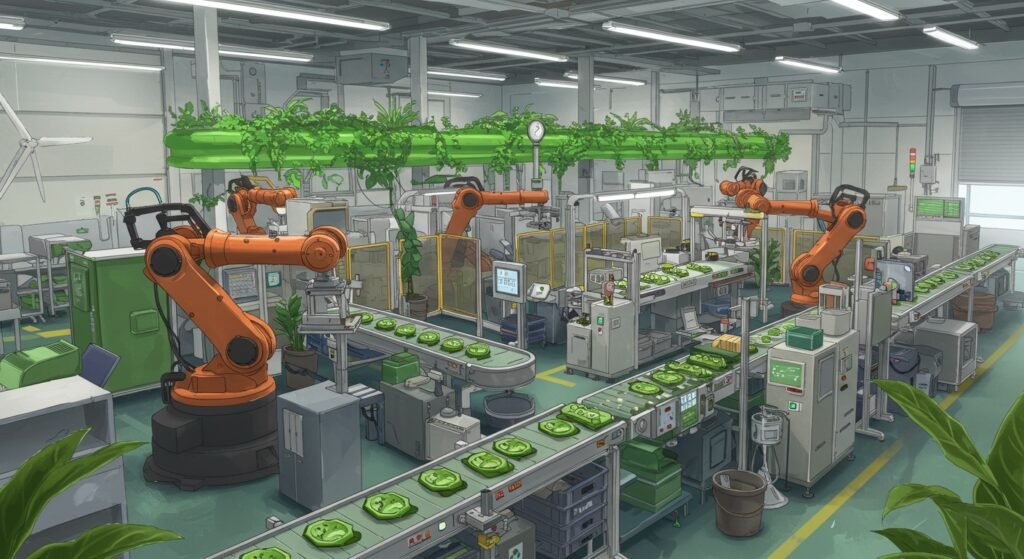Green Manufacturing Techniques: A Path to Sustainable Industry
In an era defined by environmental consciousness and resource scarcity, the adoption of Green Manufacturing Techniques is no longer just an option but a critical imperative for businesses worldwide. These innovative approaches within industrial engineering aim to minimize environmental impact while maximizing efficiency and profitability. This article delves into the core principles, implementation strategies, and emerging trends that are shaping the future of sustainable production.
Table of Contents
- Key Principles of Green Manufacturing Techniques
- Implementing Green Manufacturing in Industrial Engineering
- Emerging Trends and Future Outlook for Green Manufacturing Techniques
Key Principles of Green Manufacturing Techniques
The foundation of green manufacturing rests on several core tenets designed to reduce ecological footprints across the entire product lifecycle. Embracing these principles allows companies to not only meet regulatory requirements but also gain a competitive edge in a rapidly evolving market.
Waste Reduction and Efficiency
At the heart of any sustainable operation is the relentless pursuit of waste reduction. This includes optimizing processes to minimize material scrap, reducing energy consumption through efficient machinery and smart layouts, and decreasing water usage. Techniques like Lean Manufacturing and Six Sigma, traditionally focused on quality and efficiency, are now integral to green initiatives, aiming for “zero waste” targets by rethinking design, production, and end-of-life strategies. For instance, designing products for disassembly and recycling significantly reduces post-consumer waste.
Renewable Energy Integration
A significant step towards green manufacturing involves transitioning from fossil fuels to renewable energy sources such as solar, wind, and geothermal power. This not only lowers operational carbon emissions but also provides long-term cost stability. Companies are investing in on-site renewable energy generation or purchasing renewable energy credits to power their facilities, demonstrating a commitment to reducing their carbon footprint.
Sustainable Material Selection
Choosing materials that are renewable, recycled, recyclable, non-toxic, and sourced ethically is crucial. This involves detailed lifecycle assessments of materials to understand their environmental impact from extraction to disposal. Innovations in bioplastics, recycled metals, and responsibly harvested wood offer viable alternatives to traditional resource-intensive materials, contributing to a more circular economy.
Implementing Green Manufacturing in Industrial Engineering
Integrating green practices into existing industrial engineering frameworks requires a holistic approach, affecting everything from product design to supply chain management. This transformation demands significant investment in new technologies, employee training, and a shift in corporate culture.
| Aspect | Traditional Manufacturing | Green Manufacturing |
|---|---|---|
| Energy Source | Fossil fuels | Renewable energy (solar, wind) |
| Waste Management | Disposal, landfilling | Reduce, Reuse, Recycle, Upcycle |
| Material Sourcing | Cost, availability-driven | Lifecycle impact, sustainability-driven |
| Product Lifecycle | Linear (make-use-dispose) | Circular (design for longevity, recycling) |
| Environmental Impact | High carbon footprint, pollution | Low carbon footprint, minimal pollution |
Implementing these changes often starts with a comprehensive environmental audit to identify areas for improvement. Companies can then set measurable goals for reducing energy consumption, water use, and waste generation. Furthermore, exploring strategies like Circular Economy principles can revolutionize how products are designed, manufactured, and consumed, extending their lifecycle and minimizing waste.
Emerging Trends and Future Outlook for Green Manufacturing Techniques
The landscape of green manufacturing is continuously evolving, driven by technological advancements, stricter regulations, and increasing consumer demand for sustainable products. These trends promise even more efficient and eco-friendly production methods.
Digitalization and Industry 4.0’s Role
The advent of Industry 4.0 technologies like Artificial Intelligence (AI), the Internet of Things (IoT), and big data analytics is revolutionizing green manufacturing. AI can optimize energy usage in factories, predict equipment failures to prevent waste, and refine production processes for maximum efficiency. IoT sensors provide real-time data on resource consumption, allowing for immediate adjustments and continuous improvement. These digital tools empower manufacturers to make data-driven decisions that enhance both sustainability and profitability.
The future of industrial engineering is undeniably green. As global challenges like climate change intensify, the adoption of Green Manufacturing Techniques will only accelerate, fostering a new era of responsible and resilient production. For more comprehensive information on sustainable industrial practices, you can visit the EPA’s Sustainable Manufacturing page.


